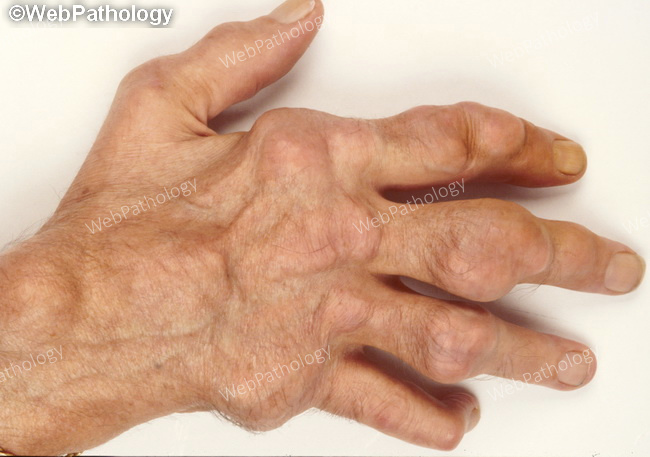Gout : Clinical Presentation


Comments:
Gout usually presents in 4th to 6th decades of life and is more common in men and in black patients. Risk factors include obesity, alcoholism, metabolic syndrome, diuretic therapy (loop or thiazide), and renal insufficiency. Phases of Gout: The disease goes through several phases. Asymptomatic hyperuricemia is the first phase and it can last for several years. The plasma urate levels are >6.8 mg/dl. Acute Monoarticular Arthritis: This is the next phase which presents with sudden onset of severe joint pain. The attack may be precipitated by trauma, surgery, infection, dietary excess (especially red meat consumption), excessive alcohol intake, hypertension, and lead exposure. There is swelling, hyperemia, warmth, and tenderness around the affected joint. The metatarsophalangeal joints are the most commonly involved followed by instep, ankles, heels, knees, wrists, fingers, and elbows. The acute attack subsides in hours to days when urate crystals resolubilize and the inflammation resolves. Asymptomatic intercritical period: The disease enters an asymptomatic period that lasts for months to years during which the patient is symptom free. Chronic Tophaceous Gout: If left untreated, the cycle of painful acute episodes resumes and the attacks become polyarticular and more frequent. Chronic tophaceous gout develops 10-15 years after the onset of symptoms. The hallmark is deposition of gouty tophi in and around joints along with crippling joint deformities (as shown here). Massive urate deposits can produce soft tissue masses and cause secondary skin ulceration with draining sinuses through which may extrude the chalky yellow-white material.



